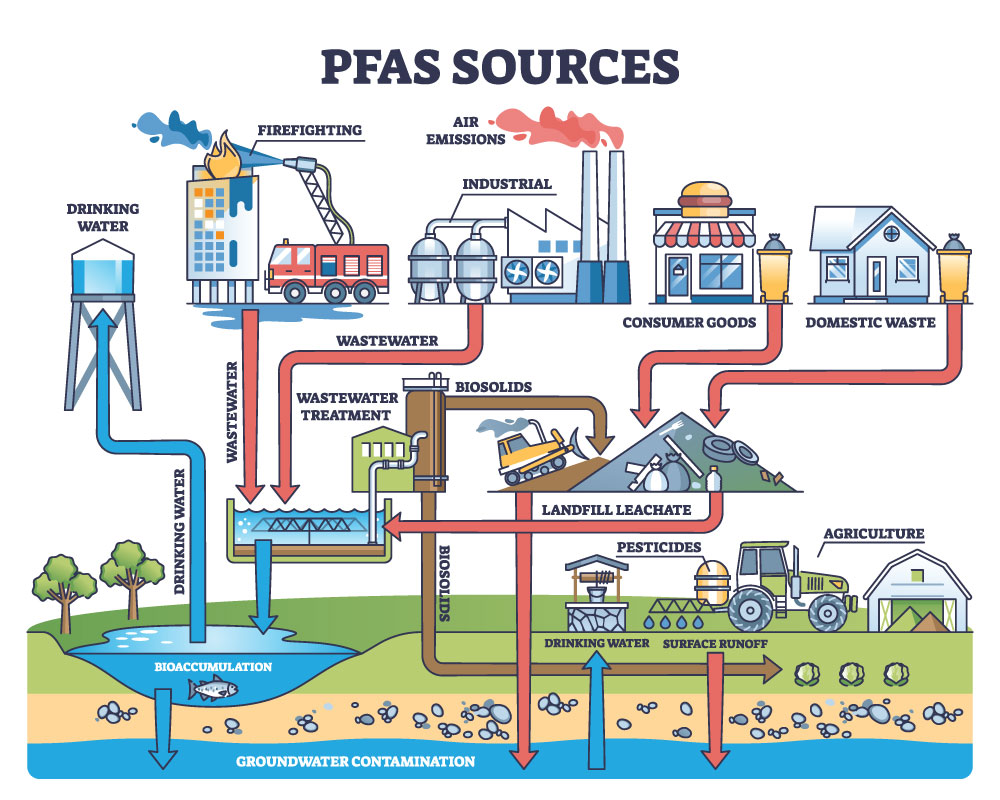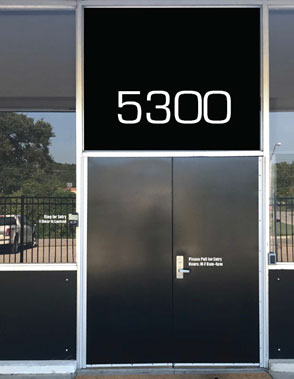What has long been viewed as an irreplaceable solution in the coatings industry, “PFAS” has become a “4-letter word”
Even if you’ve never heard of the chemical “PFAS”, your world is currently being affected by it. PFAS (per- and polyfluoroalkyl substances), also frequently called “forever chemicals”, is a man-made chemical characterized by its strong carbon-fluorine molecular bond, which is one of the strongest molecular bonds in all of chemistry.
This strong molecular bond is significant to PFAS’s almost unrivaled chemical resistance to a broad range of acids, solvents and other chemicals that degrade not only other coatings, but also metals and materials. Ironically, the strengths of PFAS in coatings are how it comes to be known as a “forever chemical”.
While the PFAS in/on common products stands up to environmental degradation longer than most, their degradation is slow and continuous. This leads to their accumulation in soil, water, and living organisms. PFAS exposure has been linked to adverse health effects, including cancer, hormonal disruption, immune system suppression, and developmental issues in children.
PFAS Alternatives
Some of our customers have already asked us to guide them on converting their coating specifications to PFAS-Free alternatives. In each case, we have found them at minimum, new coatings that are equivalent to their PFAS-based predecessors, and in several cases the new coating solutions have benefits they didn’t have before.
We will be publishing case studies about these success stories soon. However, feel free to reach out to us if you would like to explore PFAS-free options as well!
We can be reached at info@nullextremecoatingsolutions.com or call us at 916.381.9901. You can also find us online at www.extremecoatingsolutions.com


 The following is a list of important questions related to your current investment in molds and tooling:
The following is a list of important questions related to your current investment in molds and tooling:
 What does it mean to be Food-Grade?
What does it mean to be Food-Grade? By Angela Conrow, Controller at Extreme Coating Solutions
By Angela Conrow, Controller at Extreme Coating Solutions


 One of Extreme Coating Solutions (ECS) clients inquired whether we could provide a semi-permanent coating that would allow them to discharge the remaining LDPE resin they used for laminating large animal feed bags.
One of Extreme Coating Solutions (ECS) clients inquired whether we could provide a semi-permanent coating that would allow them to discharge the remaining LDPE resin they used for laminating large animal feed bags.
 One unique project that we provide the final finishes for at our facility involves acrylic teeth replicas used as teaching tools for dental students. In the beginning, there were a number of different coating options we tested to achieve our client’s specific criteria. Collaborative work with the client included the development of customized painting jigs, which not only minimized variables that could result in quality issues, but also minimized the handling required to process the parts.
One unique project that we provide the final finishes for at our facility involves acrylic teeth replicas used as teaching tools for dental students. In the beginning, there were a number of different coating options we tested to achieve our client’s specific criteria. Collaborative work with the client included the development of customized painting jigs, which not only minimized variables that could result in quality issues, but also minimized the handling required to process the parts.
